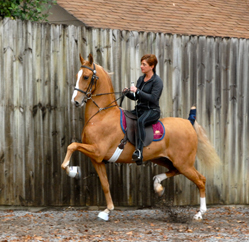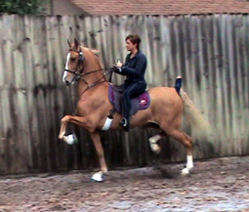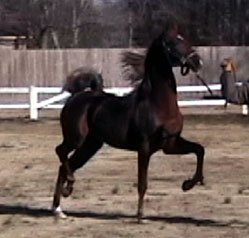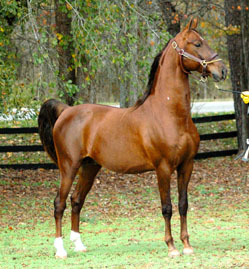10 Tips For Photographing and Videoing Your Horse For Sale
Tuesday, January 28, 2014
You Never Get A Second Chance To Make A Good First Impression:
10 Tips For Photographing and Videoing Your Horse For Sale
By Jackie Hale
Times are changing, and the way we market and sell our horses is changing with the times. Years ago, trainers and clients went on many a wild-goose chase looking for that perfect mount. Later, we began narrowing down the possibilities with the advent of videotapes, then DVDs. Today, people visit stable and auction websites and social media platforms like Facebook and YouTube to see online photos and videos before scheduling that road trip. Therefore, it is imperative that you have a good quality photo and good video of your horse in order to attract potential buyers.
The photo dictates the first impression a potential buyer forms of your horse. They will make a quick judgment and decide if they are interested enough to click on the video. The video will determine if they pick up the phone. Show ring professional photographs and videos are always best, but in some instances, may not be available. If you are unable to have a professional shoot your horse at a show or your farm, here are a few tips from the experts.
1. Use a quality still camera and video camera – not a smartphone. The camera function on a cell phone is great to catch your child’s first steps or a quick snapshot of your friends, but it is not meant to take photos from a distance or anything other than a short video clip. Be sure the image quality on the still camera is set to the highest level, otherwise the photo may be low resolution and grainy. Using a video camera will allow you to zoom and will produce a much higher quality video.
2. Prepare the horse properly. Turn it out like it is headed to the show ring. There is no need to black hooves, but be sure the animal is clean, clipped, tail is down and tied or braced if it shows that way. Tack should be clean and properly fitting - and don’t use excessive action devices, shin guards, neck sweats, rundowns, etc. You are selling the horse, not demonstrating training equipment. Keep it simple.
3. The rider or handler should be properly attired. Wearing a full riding suit is not necessary, but do wear jodphur pants and boots and a collared shirt. No baseball caps, tank tops or long hair blowing in the wind – put it up in a ponytail. You don’t want to ruin an otherwise great photo with a sloppy-looking jockey.
4. Timing is everything. Take outdoor photos and videos either early in the morning or late in the afternoon, 2-3 hours before sunset, when the sun is lower and the object is totally illuminated. Bright sun at high noon will cause harsh lighting and shadows. Take photos with the sun behind the photographer as much as possible. Silhouette photos with a beautiful sunset in the background may be fine for your coffee table, but that shot isn’t going to sell your horse. If you are shooting indoors during the day, sunlight streaming in open doors will cause a major glare, so it is best to close the doors and use artificial light, or video in the evening.
5. Prepare the setting. Move the manure spreader, cut the grass, and don’t have horses and people hanging over the fence in the background. Horses will be more animated if you take them to an area where they are unfamiliar rather than the arena where they work every day.
6. Use a noise-maker or a bait horse to create a focal point. Don’t have too many people entertaining, as that tends to make the horse nervous and may have the opposite effect.
7. Take your conformation shots first – that way the horse is freshly groomed and doesn’t have any sweat marks. The horse will also be fresher and will show more presence than after a workout. Be ready and try to get everything perfect for the first few shots, because a large percentage of the time the first shots are going to be your best. Place the horse’s front feet slightly uphill – a little higher in front than the rear – and fill the frame with your subject. The horse should take up about 50% of the photo.
(Conformation)
8. Take advantage of your camera’s advanced settings. When photographing action, you should set your camera to Manual and use a minimum 1/500 second shutter speed or higher. (On a bright sunny day your camera will probably do this automatically in Program mode.) If your camera has motor drive, or “sport mode”, you may want to use that at first, until you can time the action in single shot mode. If you want the background to be soft or out of focus, you should choose the aperture priority setting of f2.8 or f2.0. (Remember, the smaller the number f/stop, the larger the lens will be open and the shallower the depth of field. The larger the f/stop (f11 and up) the smaller the lens opening and the longer the depth of field.)
9. Be aware of the background noise in the video. If you have the capability to edit the video and remove the audio – perhaps replacing it with music – that would be best. Otherwise, keep the chatter to a minimum. If you do use music, be sure that it is not offensive and is appropriate for a wide variety of age groups. Granny may be buying the horse, so we don’t want to turn her off with rap or heavy metal.
10. Market to your audience. What would you want to see if you were the buyer? If it is a Pleasure horse, it needs to walk, stand quietly and even back a few steps. People want to see the horse do all of the gaits, both ways of the ring. Random passes and chopped-up videos raise questions in the buyer’s mind – so be consistent and accentuate the positives. The video need not be long; 2-3 minutes is generally adequate. Videos that are too long will lose the viewer’s attention, or they will start looking too closely. Show them just enough to spark their interest and get them to pick up the phone and contact you for more information.
Preparation, timing and good old-fashioned common sense will result in better photos, quality videos, and hopefully an increase in inquiries that will lead to sales.
Jackie Hale and her husband, James, own Southern Saddlebred Sales and James Hale Stables in Columbiana, AL and have been utilizing the Internet to market and sell horses since 1996. She would like to thank professional photographers Howie Schatzburg and Doug Shiflet for their contributions to this article.
Photo Cut Lines:
(Still Camera)

(Video Camera)

Here are 2 photos of the same scene - one taken with a still camera and the other is a freeze frame from a video clip (right). The camera photo is much better color and higher quality (300dpi), while the video image is lower resolution (72dpi) and poor color. Use a still camera to take photos, a video camera to
shoot video, and use your cell phone to make phone calls.

Too Dark
This is an example of a photo taken from a distance with a cell phone. It is low resolution, which makes it fuzzy, and too dark. Whenever taking an action photo on a cloudy day, you may need to manually adjust the shutter speed setting on your camera.

Too Light
Here is an example of a photo with harsh sunlight and a cluttered background. The best time of day to take photos is early in the morning or 2-3 hours before sunset when the sun is lower and the object is fully illuminated. Choose a setting that has a clean background so that you do not distract from the subject.

Conformation
Conformation shots are very important when marketing and selling horses online. Take your conformation shots first – while the horse is freshly groomed – in an area that is not familiar to them. Place the horse slightly uphill and use a bait horse or noise-maker to create
|